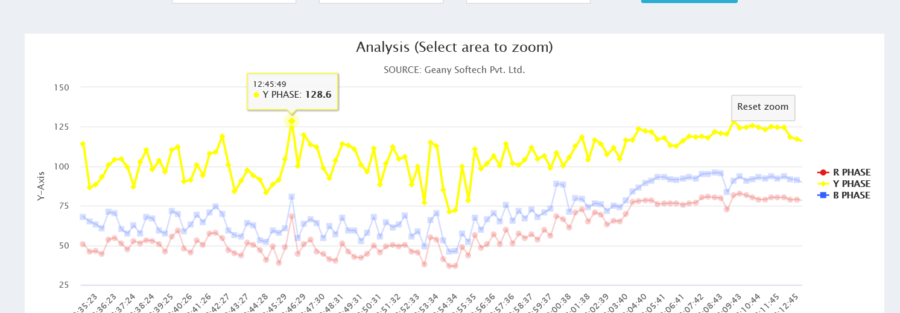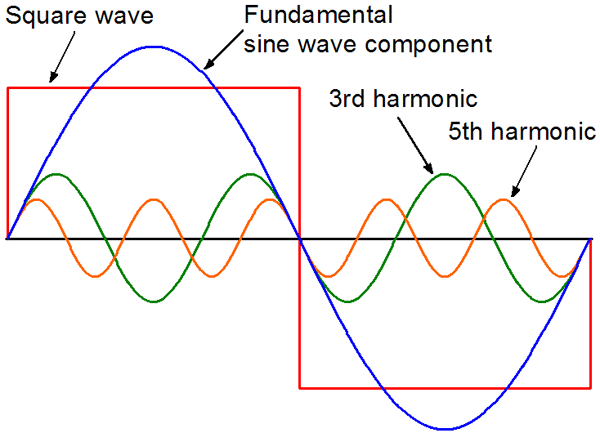What is Harmonic in Electrical?
Harmonics are electrical signals that occur at frequencies that are multiples of the fundamental frequency of a power supply.
Harmonic distortion occurs when non-linear loads draw non-sinusoidal current from the power supply. This results in a voltage waveform that is distorted and contains harmonics. Harmonics can cause problems such as voltage distortion, which can cause flickering lights, equipment malfunctions, and other issues. Voltage distortion can also lead to power losses, as energy is lost due to the distortion of the waveform.
What is Harmonic Current?
Harmonic currents are electrical currents that flow in an alternating current (AC) system at a frequency that is a multiple of the fundamental frequency.
In a perfect AC system, the voltage and current waveforms are sinusoidal and have the same frequency. However, when non-linear loads are added to the system, the current waveform becomes distorted, and harmonic currents are introduced.
The most common way to measure harmonic currents is through the use of Oneunit system or Power quality analyser. These devices measure the harmonic content of the current waveform and provide valuable information about the electrical system. Power quality analyzers can be used to identify the source of harmonic currents and determine the severity of the problem
Why Harmonic currents are generated?
Harmonic currents are generated in electrical systems when non-linear loads are present. Non-linear loads are devices that do not draw current in a sinusoidal waveform like linear loads do. Instead, they draw current in a waveform that is distorted from the sinusoidal waveform. This distortion is caused by the non-linear behavior of the load, which can result in the generation of harmonic currents.
For example, electronic devices such as computers, variable speed drives, and fluorescent lighting are all non-linear loads that can generate harmonic currents. These devices use electronic components that draw current in a non-linear fashion, which can lead to the generation of harmonic currents.
Power System Harmonics, which is induced by the non-linearity of customer loads, is becoming a significant source of concern. This issue has gotten a lot of attention from utilities, equipment makers, and users.
Power System Harmonics cause several problems by distorting the waveform shape of voltage and current and increasing the current level. If you are facing the problem of random failure of motors and drives, nuisance tripping of circuit breaker and transformer overheating, then it could be because of harmonics current.
The frequency of the harmonic currents generated by non-linear loads is typically a multiple of the fundamental frequency of the electrical system. In a typical AC system, the fundamental frequency is 60 Hz in North America and 50 Hz in Europe and other parts of the world. The most common harmonic frequencies generated by non-linear loads are the 3rd, 5th, 7th, 11th, and 13th harmonics, although other harmonic frequencies can also be present.
Negative impact of Harmonic Voltage.
Harmonic currents can cause a number of problems, including increased losses in the electrical distribution system, reduced power quality, and increased heating in equipment such as transformers and motors.
-
Increased losses: Harmonic currents can cause increased losses in electrical systems, which can result in higher energy costs. This is because the distortion caused by harmonic currents can cause additional current to flow through the electrical system, leading to increased resistive losses.
-
Reduced power quality: Harmonic currents can reduce the power quality of electrical systems, which can result in voltage fluctuations, flicker, and other power quality issues. These issues can cause problems for sensitive electrical equipment and can lead to malfunctions and failures.
-
Increased heating: Harmonic currents can cause increased heating in electrical equipment such as transformers, motors, and cables. This is because harmonic currents can cause additional eddy currents and hysteresis losses in the equipment, which can lead to increased heating and reduced equipment lifespan.
-
Equipment damage: In addition to increased heating, harmonic currents can also cause damage to electrical equipment. This is because the high frequency components of harmonic currents can cause resonances in the equipment, leading to mechanical vibrations and electrical insulation breakdown.
-
Regulatory compliance issues: Many electrical systems must comply with regulatory standards for power quality, and harmonic currents can cause compliance issues. In some cases, non-compliance can result in fines or other penalties.
Harmonic current reduction techniques.
There are several techniques that can be used to reduce harmonic currents in electrical systems:
-
Passive filters: Passive filters are designed to reduce the overall harmonic content of the current waveform. These filters work by using a combination of inductors, capacitors, and resistors to filter out harmonic frequencies.
-
Active filters: Active filters are similar to passive filters but include electronic components that can actively inject current into the system to cancel out harmonic currents.
-
Harmonic traps: Harmonic traps are devices that are placed in parallel with non-linear loads to trap harmonic currents before they enter the electrical system.
-
Line reactors: Line reactors are inductors that are placed in series with non-linear loads to limit the amount of harmonic current that can flow into the electrical system.
-
Isolation transformers: Isolation transformers are designed to isolate non-linear loads from the electrical system, which can reduce the impact of harmonic currents on the system.
-
Upgrading equipment: Upgrading electrical equipment such as transformers and motors can reduce the impact of harmonic currents by ensuring that the equipment is designed to handle the additional heating caused by harmonic currents.
-
Load management: Load management techniques can be used to reduce the impact of non-linear loads on the electrical system. For example, scheduling non-linear loads to run at different times or reducing the number of non-linear loads in a given area can reduce the impact of harmonic currents on the system.
Overall, the most effective technique for reducing harmonic currents will depend on the specific electrical system and the sources of harmonic currents. It is important to work with a qualified electrical engineer to design and implement an appropriate mitigation strategy.







